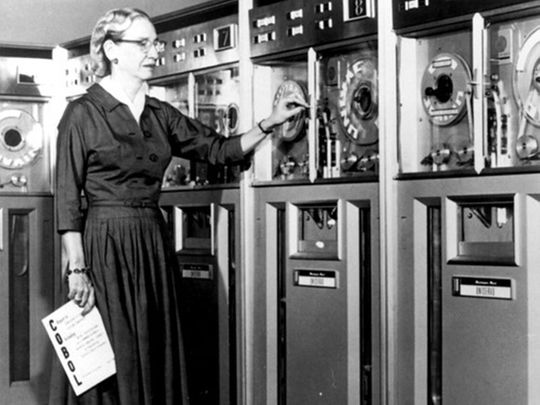
As of January, 2021, there were 4.66 billion active internet users worldwide, according to online data analytics website Statista – that’s nearly 60 per cent of the world population.
Click start to play today’s Crossword, which introduces you to some of the most influential people in modern technology.
From the first digital computer in 1939, technological innovations have improved our lives and changed the way we socialise and work. Although innovators like the ‘father of the computer’ Charles Babbage, and the inventor of the World Wide Web Tim Berners-Lee are well-known, many women have also played a role in technological progress. Here, we meet three of them:
Radia Perlman

Often known as ‘the mother of the internet’, American network engineer Perlman is best known for writing the algorithm behind the spanning tree protocol (STP). In 1985, she worked for a company called Digital Equipment Corporation, which faced a problem wherein they needed the ability to share files between computers. Perlman quickly came up with STP as the solution, in less than a week. The protocol was adopted as a standard for network bridge technology across the world, allowing the ethernet to handle massive networks.
Grace Hopper
Hopper (pictured above) wasn’t just an American computer scientist, but also a rear admiral in the US Navy. As one of the first programmers of the Harvard Mark I computer, she was a pioneer of computer programming, and developed the early programming language COBOL, which is still used today. In 1947, Hopper discovered the world’s first-ever computer bug. After her colleagues at Harvard opened up some hardware to learn what was causing errors in the computer, she found an insect – a moth – trapped in a relay. Hopper and her colleagues had to literally ‘debug’ the machine and the infamous moth was then taped into Hopper’s diary. Did you know the first computer bug was an actual bug?
Karen Sparck-Jones

When most people were trying to create codes so that humans could talk to computers, British computer scientist Sparck-Jones was teaching computers to understand human language, instead. A pioneer in information science, Sparck-Jones developed inverse document frequency (IDF), a weighing factor that evaluates how important a word is to a document. IDF is the basis of web search engines, like Google, and is used to rank a document’s relevance to a search query.
Did you know about these women tech innovators? Play today’s Crossword and let us know at games@gulfnews.com.









